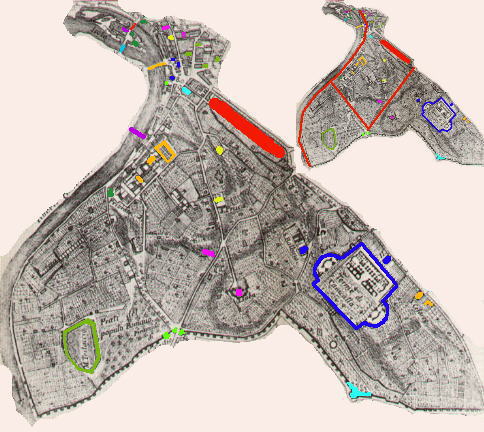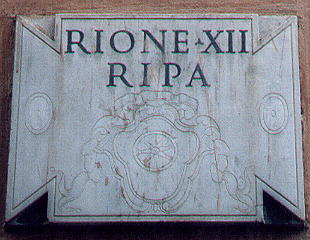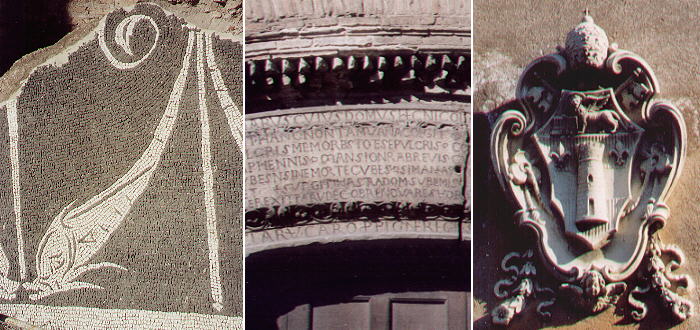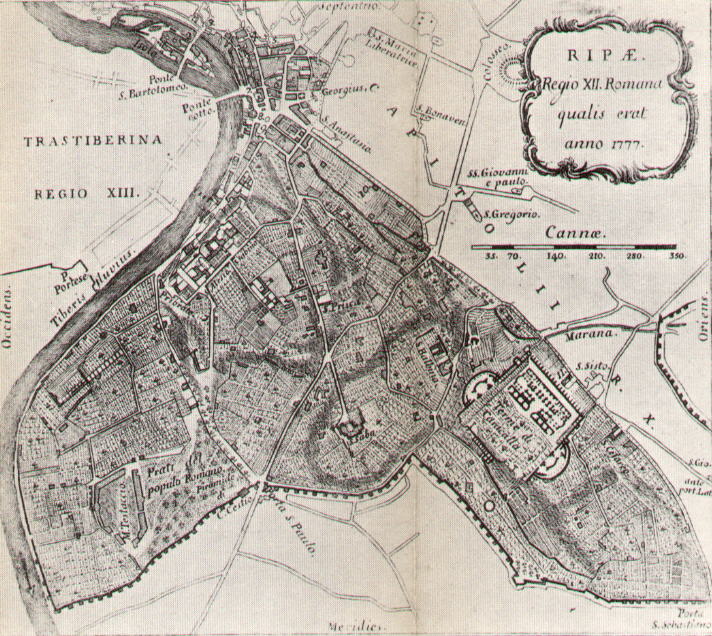  Rione XII Ripa
The symbol of Rione Ripa is a steering wheel, a reference to its ancient river harbour. Rione Ripa has several monuments dating back to ancient Rome, including a most unusual one: Piramide di Caio Cestio. Other well preserved Roman monuments are Ponte Quattro Capi and Tempio di Vesta, while the ruins of Terme di Caracalla still convey a feeling of what a gigantic building they were. After the fall of the Western Roman Empire, Rione Ripa became the preferred residence of Byzantine monks and merchants, to the point of being known as Ripa Greca: the churches of S. Maria in Cosmedin and S. Sabba Abate belong to that period. S. Sabina and S. Balbina are examples of fortified medieval monasteries. Bastione del Sangallo, an imposing section of the Roman walls rebuilt in the XVIth century, is the main Renaissance monument of Rione Ripa, while S. Maria del Priorato and Piazza dei Cavalieri di Malta give to Rione Ripa a touch of XVIIIth century elegance.
Legend of the most readable numbers: 1) S. Bartolomeo all'Isola 2) Spedale di S. Giovanni di Dio 3) S. Gregorio ai Quattro Capi 4) S. Niccolò in Carcere 5) S. Omobono 6) S. Giovanni Decollato 7) Tempio di Portuno o S. Maria del Sole 8) Tempio di Vesta o S. Maria Egiziaca 9) S. Maria in Cosmedin 10) Circo Massimo 11) SS. Nereo e Achilleo 
Main monuments of Rione Ripa The smaller map shows the major changes which occurred after 1777: a) red line along the river: in the 1880s huge walls were erected along the Tiber: this effort included a redesign of the river front which required the pulling down of many buildings; b) red line from the river to Porta S. Paolo (green dots): it marks the enlargement of Via Marmorata which now separates the highly populated quarter of Testaccio from the Aventine; c) red line from Circo Massimo (red area) to Porta S. Paolo: it marks Viale Aventino a large avenue which in a way splits the Aventine into two hills: the Aventine towards the river and S. Saba towards Caracalla's Baths. The different colours group the monuments which are shown in the same page (because of the scale of the map a few minor monuments were omitted). You can also have a look at it from the Janiculum: Isola Tiberina, Santa Sabina, Mura di Roma and Monte Testaccio .
 or to
The Coats of Arms of the Popes or
to My Home Page on Baroque Rome or to
My Home Page on Rome in the footsteps of an XVIIIth century traveller or to
The Coats of Arms of the Popes or
to My Home Page on Baroque Rome or to
My Home Page on Rome in the footsteps of an XVIIIth century traveller
|
All images © 1999 - 2004 by Roberto Piperno. Write to romapip@quipo.it


